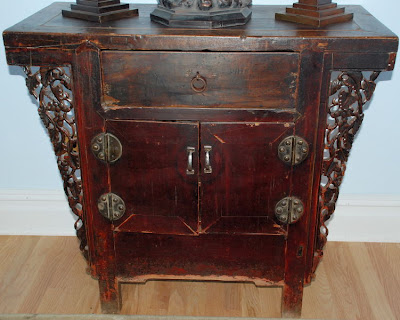 |
From left: Grand Junior Warden Matthew D. Dupee, junior Past Excellent Chief John Corrigan, Excellent Chief David Lindez, Great Chief of the USA Edward P. Fagan, x, and Excellent Ted Harrison.
|
It’s hard to believe, but it has been a year already since John Corrigan was installed in the East of our Knight Masons council, so last night was his “outstallation,” and David Lindez’s installation. It also was the official visit of M.E. Edward P. Fagan, Jr., Great Chief of the Grand Council of the Order of Knight Masons of the United States, and our council initiated a dozen new Cousins, and we celebrated Thurman Pace’s 87th birthday.
It was a busy night at Northern New Jersey Council No. 10, Order of Knight Masons.
Also in attendance was V.E. Matthew D. Dupee, Grand Junior Warden of Grand Council, who came all the way from Pennsylvania. A large contingent of New York Masons was on hand, including – or perhaps led by – Ted Harrison, currently General Grand King of the General Grand Chapter of Royal Arch Masons International.
Yes, it was a big night. That’s what you get when David is installed in the East.
There really was a lot to manage. The festivities included a bagpiper from the Rampant Lion Pipe Band, two dancers performing traditional Celtic rites, and a poetry reading by David’s mother.
There was a lot going on last night!
 |
| Candidates for initiation. |
 |
With the assistance of Excellent Rich, a spiritual message to the new Knights was imparted with this claymore.
|
 |
V.E. Matthew D. Dupee, Grand Junior Warden, explains additional meaning of the three degrees of Knight Masonry.
|
 |
M.E. Edward P. Fagan, Jr., Great Chief of the USA, tells the assembly of his experiences traveling abroad to other Grand Councils.
|
 |
| Bagpiper provides the music for the Celtic dances. |
 |
With warrant in hand, David Lindez is prepared to take his place in the East.
|
 |
| Celtic Sword Dancing. (Note the swords and their positions on the floor.) |
 |
Cousin David’s mother read two poems of her own composition, bringing David’s family heritage into the celebration. David’s roots in Ireland date way back.
|
 |
Edmund D. “Ted” Harrison, Fellow of The American Lodge of Research, among many other claims to Masonic fame.
|
 |
Thurman’s birthday cake. That is a sword on the left, not a banana; and on the right that is a trowel.
|
 |
| Here comes trouble. |
Best photo of the night: M.E. Edward P. Fagan, Jr. receives Honorary Membership in Northern New Jersey Council No. 10.
|







































































































